#Elasmobranch fossil
Explore tagged Tumblr posts
Photo

British Chalk Shark Tooth - Plicatolamna crassidens Fossil - Santonian Cretaceous, Lewes, Sussex, UK - Certified Genuine Marine Fossil
Offered here is a well-preserved and authentic fossil shark tooth from the extinct species Plicatolamna crassidens, discovered in the renowned Southerham Lime Kiln Quarry, near Lewes, Sussex, UK. This specimen comes from the Santonian Stage of the Upper Cretaceous, approximately 86 to 83 million years ago, and is part of the classic British Chalk deposits.
Plicatolamna crassidens is a lesser-known species of extinct mackerel shark that belonged to the family Lamnidae, and it inhabited the warm, shallow seas of the Late Cretaceous. These sharks are part of the order Lamniformes, which includes modern relatives like mako and great white sharks. Their fossilised teeth are characterised by their robust triangular shape, prominent striations, and sometimes faint lateral cusplets.
The British Chalk of the Cretaceous period is a globally significant geological formation known for its outstanding preservation of marine fauna. The Santonian deposits at Southerham Quarry have yielded a diverse array of marine fossils, from invertebrates to vertebrates such as fish and sharks. This site is especially significant for those studying the diversity and evolution of Cretaceous marine ecosystems.
This particular tooth is a fine example of its kind and provides both aesthetic and scientific value. Whether you're an established collector, educator, or paleontology enthusiast, it is a wonderful addition to any fossil collection.
Item Details:
Species: Plicatolamna crassidens
Type: Fossil Shark Tooth
Geological Age: Santonian Stage, Upper Cretaceous (~86–83 million years ago)
Formation: Chalk Formation
Location Found: Southerham Lime Kiln Quarry, Lewes, Sussex, United Kingdom
Scale Reference: Scale rule/cube = 1cm (please see photo for actual sizing)
Certificate of Authenticity: Included
ACTUAL AS SEEN: The image shows the exact fossil specimen you will receive. This item has been carefully hand-selected and photographed. Due to the natural variability of fossils and lighting or monitor settings, minor variations in colour or scale may be present. Once sold, the listing will be updated with a new fossil specimen and fresh imagery.
100% Genuine Fossil – Professionally Selected – Certificate of Authenticity Included
#Plicatolamna crassidens#fossil shark tooth#British fossil shark#Santonian fossil#Upper Cretaceous fossil#Chalk fossil#Southerham Quarry fossil#Lewes shark tooth#Sussex marine fossil#UK Cretaceous fossils#fossil collection#certified marine fossil#rare shark fossil UK#Elasmobranch fossil
0 notes
Note
have you done a poll on frilled sharks yet?
Not yet!
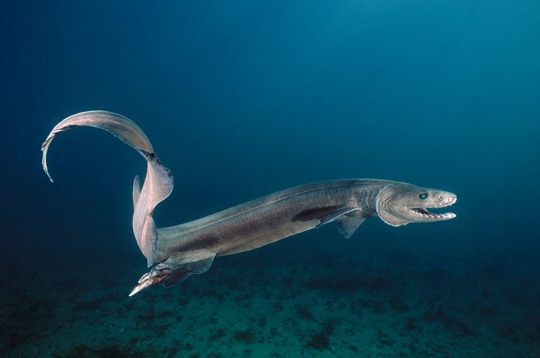
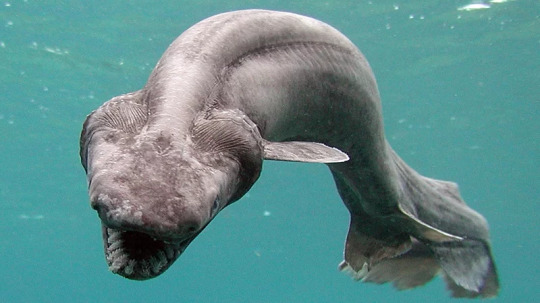
Photos thanks to Kelvin Aitken & Awashima Marine Park!
#atlantic ocean#pacific ocean#frilled shark#shark#sharks#chondrichthyes#elasmobranch#hexanchiformes#chlamydoselachidae#animal polls#poll blog#my polls#animals#polls#tumblr polls#fish#marine animals#marine fish#marine creatures#living fossil
90 notes
·
View notes
Text
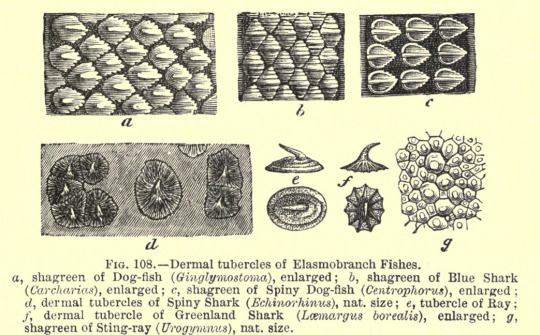
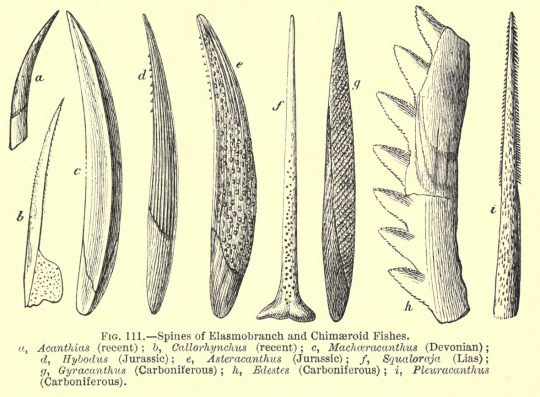
Elasmobranch tubercles & spines from A Guide to the Fossil Reptiles and Fishes in the Department of Geology and Paleontology in the British Museum (Natural History), 1896.
28 notes
·
View notes
Text
🦈Daily Shark Fact:🦈
Traveling back into the deep sea! Goblin Sharks, also known as living fossils, has been living in the deep ocean, relatively unchanged for over 125 million years. A goblin shark’s top and bottom teeth are attached to ligaments, tucked into its mouth. When prey is just out of reach, the shark can thrust their 'elastic' jaws 3in outside of their mouth to catch prey in .023 seconds, giving it the fastest bite of any shark.
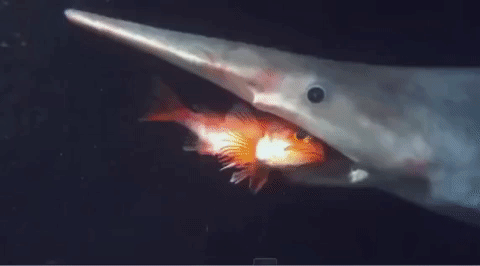
#goblin shark#shark#sharks#shark blog#shark facts#daily shark facts#deep sea shark#sharks of the deep sea#creepy shark#respect the locals#advocacy for sharks#sharks are friends not foes#cartilaginous fish#elasmobranch#alien shark#dinosaur shark#living fossil#shark post#save the sharks#sharks dont infest the ocean#shark awareness
105 notes
·
View notes
Text

Thrinacodus gracia* was a stem-elasmobranch – a cartilaginous fish related to modern sharks and rays – living in what is now Montana, USA during the mid-Carboniferous around 324 million years ago.
* previously known as Thrinacoselache gracia
Although the cartilaginous skeletons of chondrichthyans rarely preserve, the exceptional preservation conditions of the Bear Gulch Limestone fossil deposits mean we do actually have full-body soft tissue impressions of this species. It was about 1m long (3'3") with an unusually slender eel-like body, a pointed snout, no dorsal fins, and an elongated tapering tail.
Preserved gut contents show that Thrinacodus gracia preyed on shrimp-like crustaceans and smaller cartilaginous fish such as Falcatus and Harpagofututor. It would have inhabited a shallow tropical bay environment, and may have had a similar sort of lifestyle to the modern eels it resembled, hiding in crevices or burrowing into sediment and ambushing passing prey.
———
NixIllustration.com | Tumblr | Patreon
References:
Frey, Linda, et al. "The early elasmobranch Phoebodus: phylogenetic relationships, ecomorphology and a new time-scale for shark evolution." Proceedings of the Royal Society B 286.1912 (2019): 20191336. https://pmc.ncbi.nlm.nih.gov/articles/PMC6790773/pdf/rspb20191336.pdf
Ginter, Michał, and Susan Turner. "The middle Paleozoic selachian genus Thrinacodus." Journal of Vertebrate Paleontology 30.6 (2010): 1666-1672. https://doi.org/10.1080/02724634.2010.520785
Grogan, Eileen D., and Richard Lund. "A basal elasmobranch, Thrinacoselache gracia n. gen and sp.,(Thrinacodontidae, new family) from the Bear Gulch Limestone, Serpukhovian of Montana, USA." Journal of Vertebrate Paleontology 28.4 (2008): 970-988. https://www.researchgate.net/publication/213771568_A_Basal_Elasmobranch_Thrinacoselache_gracia_n_gen_spThrinacodontidae_New_Family_from_the_Bear_Gulch_Limestone_Serpukhovian_of_Montana_USA
Wikipedia contributors. “Bear Gulch Limestone” Wikipedia, 28 Apr. 2025, https://en.wikipedia.org/wiki/Bear_Gulch_Limestone
Wikipedia contributors. “Thrinacodus” Wikipedia, 04 Jan. 2025, https://en.wikipedia.org/wiki/Thrinacodus
#science illustration#paleontology#paleoart#palaeoblr#thrinacodus#thrinacoselache#phoebodontidae#phoebodontiformes#elasmobranch#chondrichthyes#cartilaginous fish#fish#art#convergent eelvolution
197 notes
·
View notes
Text
today's animal of the week is... sharks!!!
Requested by: @royalbabybat sorry I was late to uploading this...
if i got any of the facts here wrong, let me know
Sharks are apex predators that live in the ocean, and a special kind of fish called "elasmobranchs", which translates into fish made of cartilaginous tissues (the same material as your ears and the tip of your nose). They do not have bones yet they still fossilize! Sharks have rows of teeth which they lose and regrow quite a bit within their lifetime.
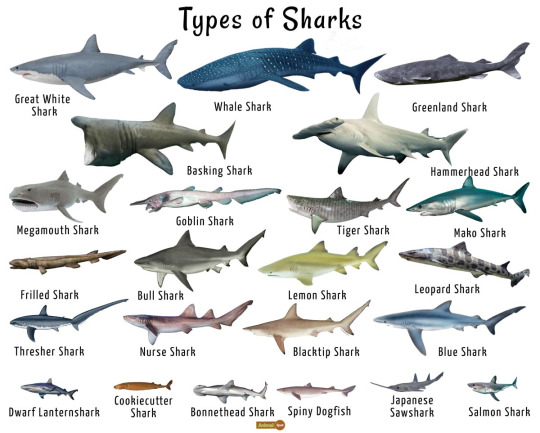
There are over 500 different species of shark that all vary dramatically in size, the largest is the whale shark which is around 41.5 feet (12.6 meters) and the smallest is the dwarf lantern shark which is about 6 inches (15 centimeters). The average life span of most shark species is 20 years, but the spiny dogfish shark can live over 100 years! Sharks are actually generally not dangerous to humans, the odds of you being attacked by a shark is only 1 in 3,700,000 and only 10 of the many species of sharks has been seen to attack humans. Still, if you are swimming and see a shark, do not mess with it or touch it in any way, just like with any wild animal you see. Sadly, many species of shark are endangered due to over hunting.
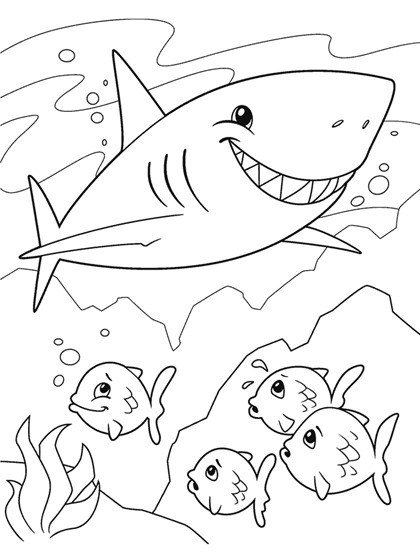
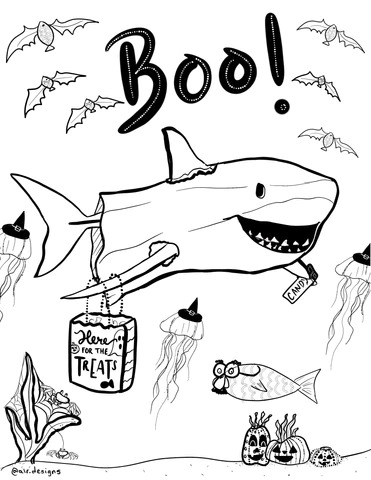

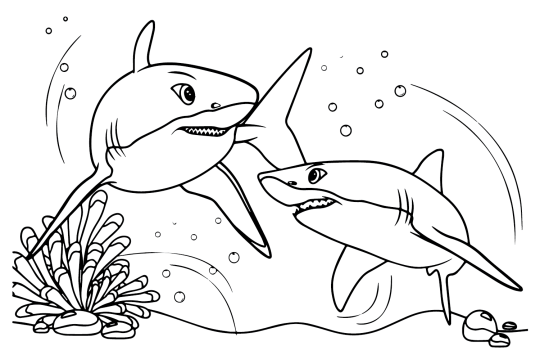
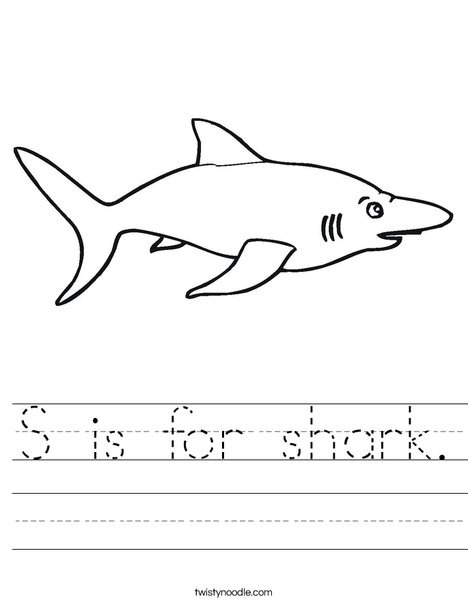
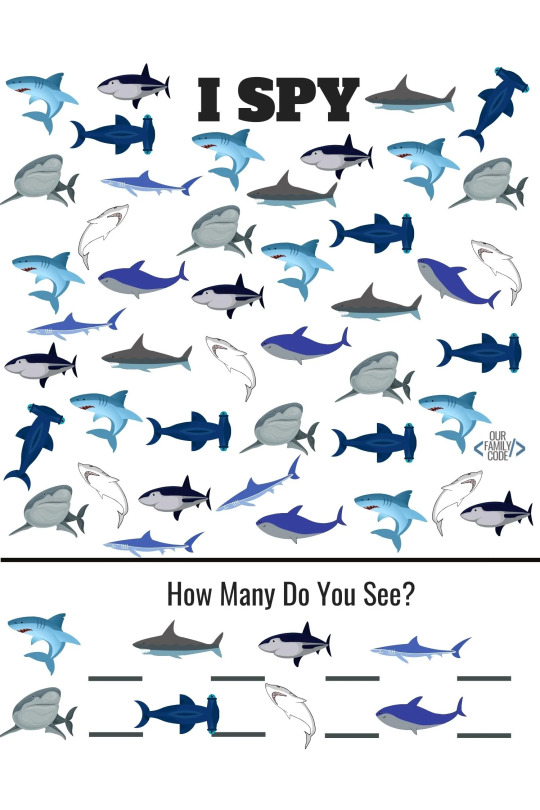
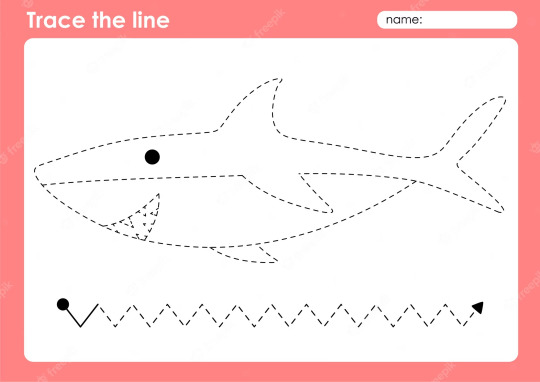
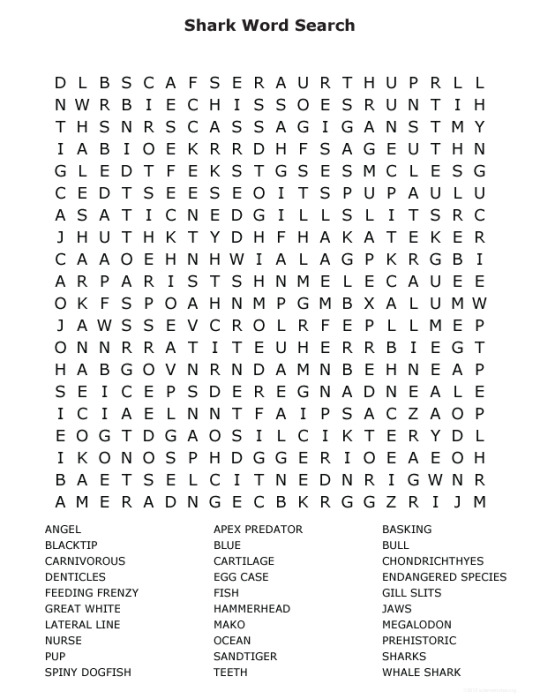
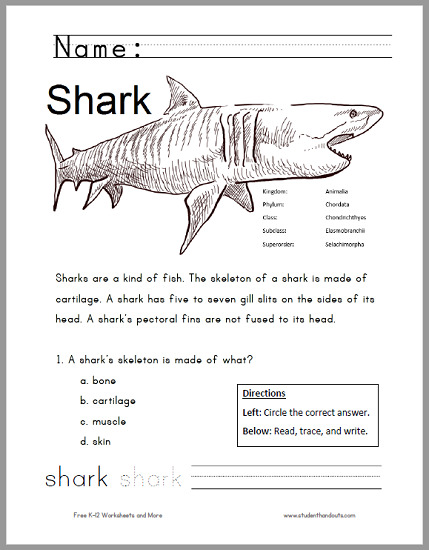
Moving paper shark toy:
youtube
(with my health and procrastination it has come to my attention that i may not be able to do this every week, i am keeping the same name for it, sorry if i do your requests slowly)
#sfw agere#agere#agere community#age regression#age regressor#agere blog#sfw agere blog#sfw interaction only#no kink interaction#boy age regressor#sharks#sfw age regressor#non com agere#agere activities#age regression blog#agere coloring pages#agere education#agere animal of the week#Youtube
348 notes
·
View notes
Text
Trophic relationships in the Early Miocene Upper Marine Molasse of Baden-Württemberg, Southwest Germany, with special emphasis on the elasmobranch fauna
Published 10th November 2023
Reseachers present a fresh and comprehensive palaeoecological reconstruction of the Early Miocene Upper Marine Molas ecosystem in Baden-Württemberg with a focus on the elasmobranch fauna to determine the trophic relationships, using fossil teeth as proxies for diet and trophic levels based on functional morphology and an actualistic species- or genus-level approach.

New lithostratigraphic terminology for the Ottnangian deposits of the Upper Marine Molas in Southwest Germany

Map showing the fossiliferous localities
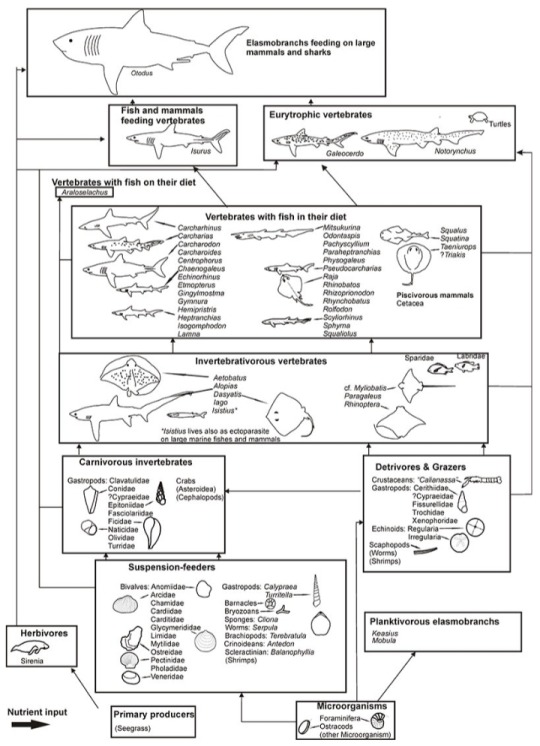
Generalized trophic interaction scheme of the five Upper Marine Molas deposits
source:
https://doi.org/10.26879/1233
5 notes
·
View notes
Note
Sharks are a group of elasmobranch fish characterized by a cartilaginous skeleton, five to seven gill slits on the sides of the head, and pectoral fins that are not fused to the head. Modern sharks are classified within the clade Selachimorpha (or Selachii) and are the sister group to the Batoidea (rays and kin). Some sources extend the term "shark" as an informal category including extinct members of Chondrichthyes (cartilaginous fish) with a shark-like morphology, such as hybodonts. Shark-like chondrichthyans such as Cladoselache and Doliodus first appeared in the Devonian Period (419–359 million years), though some fossilized chondrichthyan-like scales are as old as the Late Ordovician (458–444 million years ago).[1] The oldest confirmed modern sharks (selachimorphs) are known from the Early Jurassic, about 200 million years ago, though records of true sharks may extend back as far as the Permian.
Sharks are u! I eat u
3 notes
·
View notes
Text
Sharks do not have bones.
Sharks use their gills to filter oxygen from the water. They are a special type of fish known as "elasmobranchs", which translates into fish made of cartilaginous tissues—the clear gristly stuff that your ears and nose tip are made of. This category also includes rays, sawfish, and skates. Their cartilaginous skeletons are much lighter than true bone and their large livers are full of low-density oils, both helping them to be buoyant.
Even though sharks don't have bones, they still can fossilize. As most sharks age, they deposit calcium salts in their skeletal cartilage to strengthen it. The dried jaws of a shark appear and feel heavy and solid; much like bone. These same minerals allow most shark skeletal systems to fossilize quite nicely. The teeth have enamel so they show up in the fossil record too.
3 notes
·
View notes
Photo

Fossil Ray Tooth Plate Myliobatis sp Aquia Formation Palaeocene Maryland USA Genuine
Fossil Ray – Myliobatis sp. (Eagle Ray Tooth Plate)
Geological Period: Late Palaeocene (Thanetian Stage)
Age: Approximately 59 to 56 million years ago
Formation: Aquia Formation
Locality: Wades Bay, Charles County, Maryland, USA
This listing features a genuine tooth plate from Myliobatis sp., a genus of eagle ray that once inhabited the warm, shallow seas of what is now the Atlantic Coastal Plain of North America. This fossil comes from the Aquia Formation, a well-known Late Palaeocene marine deposit exposed along the Potomac River and its tributaries.
The Myliobatis tooth plate is characterised by its flat, pavement-like structure, composed of interlocking teeth adapted for crushing hard-shelled prey such as mollusks and crustaceans. These rays were part of the elasmobranch lineage, related to modern rays and sharks, and played an important ecological role in Palaeocene marine ecosystems.
The Aquia Formation, dating to the Thanetian stage of the Palaeocene, consists of glauconitic sands and silts deposited in a shallow marine environment. Fossils from this formation include a rich variety of shark teeth, ray dentition, bony fish, and marine reptiles.
Actual Specimen Pictured: The item you see is the exact fossil you will receive.
Scale: 1cm cube included in the image for accurate sizing. Please refer to the photo.
Condition: Naturally preserved and stable; some wear consistent with aquatic fossilisation processes.
Excellent for:
Fossil collectors and marine palaeontology enthusiasts
Educational and teaching collections
Natural history exhibits
Thoughtful gifts for lovers of ancient sea life
All of our Fossils are 100% Genuine Specimens & come with a Certificate of Authenticity.
We carefully select each specimen based on authenticity, scientific interest, and visual appeal.
#fossil ray tooth#Myliobatis fossil#Aquia Formation fossil#Palaeocene ray#Wades Bay fossil#Maryland fossil#Thanetian marine fossil#stingray fossil#fossil fish plate#prehistoric ray tooth#fossil elasmobranch#real ray fossil#ray dentition fossil#Myliobatidae fossil#USA marine fossil
0 notes
Photo


Discovery of a 95-Million-Year-Old ‘Eagle Shark’ Fossil Makes Waves
The ancient creature likely used its six-foot-wide wingspan to move with ‘underwater flight’
The eagle shark was probably not as fearsome as its name suggests. The ancient shark, described on March 19 in the journal Science, was most likely a slow-moving filter feeder that looked like a cross between a standard shark and a manta ray. But the eagle shark lived about 95 million years ago, 30 million years before modern rays appeared in the ocean.
The find has paleontologists wondering of other ancient sharks took unusual shapes, since many are known only by the teeth they left behind.
The eagle shark, Aquilolomna milarcae, fossil has the opposite appearance: an entire skeleton, but no teeth were preserved that would have helped paleontologists categorize it. The researchers took signs from other aspects of its anatomy—like its broad head and wide, wing-like fins—to draw conclusions about the shark’s behavior.
“As this shark probably fed on plankton, it didn’t need to go fast,” says Romain Vullo, first author of the new study and a paleontologist at the Université de Rennes, to New Scientist’s Adam Vaughan. “Like modern manta rays, relatively slow swimming was enough to eat plankton...”
Read more: https://www.smithsonianmag.com/smart-news/discovery-95-million-year-old-eagle-shark-fossil-makes-waves-180977285/
images: Wolfgang Stinnesbeck and Oscar Sanisidro
#prehistoric#ocean#marine biology#fossils#shark#elasmobranch#fish#ichthyology#science#animals#nature#mexico
223 notes
·
View notes
Photo
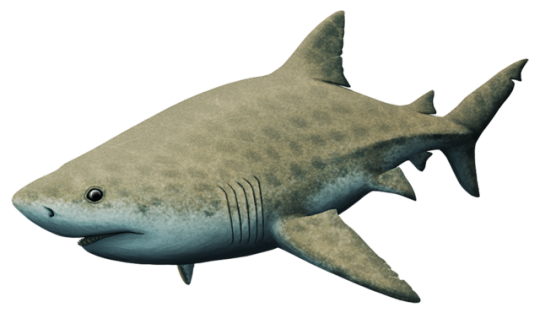
Almost-Living Fossils Month #27 -- Those Giant Sharks
For the final entry this month, let’s look at a particularly famous lineage: the megatooth sharks.
More formally known as the otodontids, the megatooths were a group of sharks that first appeared in the Early Cretaceous, about 115 million years ago. They were a branch of the mackerel shark lineage -- making them evolutionary cousins to a variety of modern species like the great white shark, basking shark, and goblin shark -- and had a near-worldwide distribution, with fossils known from every continent except Antarctica.
Early otodontids in the Cretaceous were usually small-to-medium sized, around 2-3m long (6′6″-9′10″), but after surviving through the end-Cretaceous extinction they took over the marine apex predator niches left vacant by the vanished mosasaurs and plesiosaurs and began to get very big. Species of Otodus in the Paleocene and early Eocene may have reached sizes of at least 9m long (29′6″), twice the size of an average great white.
Their teeth gradually became proportionally larger in their jaws, losing their side cusplets and taking on a chunky triangular shape with finely serrated edges. This gave them an incredibly powerful bite force, and they would have probably fed on pretty much any other large marine vertebrates they could catch, including bony fish, smaller sharks, turtles, and early penguins -- and then when marine mammals like early whales and sirenians appeared in the mid-Eocene, they adapted to this new food source too.
By the Late Eocene (~35 mya) the Otudus lineage was still developing even chunkier and more serrated teeth, and by the Early Oligocene (~28 mya) Otodus chubutensis reached even larger sizes rivaling the modern whale shark at around 12m long (39′4″).
But the most well-known member of the group evolved just a few million years later in the Early Miocene (~23 mya) – the absolutely enormous "megalodon".
There’s some debate about what genus name megalodon should be assigned to – at the moment its formal name is usually considered to be Otodus megalodon, but some paleontologists place it in Carcharocles or Megaselachus or Procarcharodon instead. Whatever you want to call it, it was a ridiculously big shark – size estimates range up to about 18m (59′), which would make it potentially the largest fish to have ever lived.
Since these huge sharks are all known mostly from just their fossilized teeth (and occasionally a few exceptionally preserved cartilaginous vertebrae), it’s hard to tell what they actually would have looked like in life. Megalodon is frequently depicted as simply a scaled-up great white, but it’s unclear how accurate that really is -- it may have convergently resembled a giant great white due to their similar predatory habits, or it could have had a build more like the larger basking shark or whale shark.
A preserved megalodon skull has actually been found, but no studies of it have been published yet. It might give us some important clues about the head shape of this giant shark, but until there’s some official information all we can do is continue to speculate.
Megalodon was a highly successful species, living all around the world in warm and temperate ocean waters for around 20 million years. Its teeth have been found in association with the bones of many different smaller whale species, suggesting it frequently ate marine mammals, and the patterns of the bites marks indicate it probably used different hunting strategies than modern great whites. Some whales seem to have been heavily rammed and then had their ribcages bitten into, targeting their hearts and lungs, while others had their flippers ripped off to immobilize them.
During the Pliocene (~5-2.6 mya), however, megalodon began to struggle. Cooling oceans and changes in the abundance of the marine mammals it ate began to restrict its available prey. Baleen whales started to grow too large for it to effectively hunt, since it preferred to target smaller species, and they also shifted their ranges towards the cold polar waters that megalodon didn’t seem to be able to survive in. In addition, dropping sea levels may have destroyed most of its shallow warm-water nursery sites, making it harder for newborn young to survive into adulthood.
By the end of the Pliocene, somewhere between 3.6 and 2.6 million years ago, megalodon went completely extinct. Despite some very pseudoscientific claims, there’s definitely no living “Meg” out there anymore -- if there was, we’d be constantly finding freshly-shed teeth and whales with giant bite marks on their bodies!
#almost living fossils month#science illustration#paleontology#paleoart#palaeoblr#megalodon#otodus#carcharocles#otodontidae#megatooth sharks#lamniformes#selachimorpha#shark#elasmobranch#chondrichthyes#cartilaginous fish#fish#art#long post#who's the baddest shark around?#who's the smartest shark in town?
181 notes
·
View notes
Photo

#aquarium #aquariums #notadinosaur #paleontology #scicomm #science #biology #zoology #geology #fossil #fossils #shark #sharks #elasmobranch #goblinshark #shonisaurus #dream #dreams https://www.instagram.com/p/BsXg_wDAuVK/?utm_source=ig_tumblr_share&igshid=1aodcyeoe9d73
#aquarium#aquariums#notadinosaur#paleontology#scicomm#science#biology#zoology#geology#fossil#fossils#shark#sharks#elasmobranch#goblinshark#shonisaurus#dream#dreams
3 notes
·
View notes
Photo

HAPPY #skullsunday! I'm still processing just how awesome my trips to the Royal Tyrrell Museum & Museum of Osteology were, so I've combined the two! . The top photo is a jaw from a modern bowmouth guitarfish (Rhina ancylostoma) below, is a guitarfish from 75 million years ago! . With 47 flattened upper and 50 lower tooth rows arranged in winding bands, guitarfish can crush and feed on the hard shells of mollusks and crustaceans. . Elasmobranchii, a subclass of cartillaginous fishes such as sharks, rays, skates, and sawfish, have been on the planet for millions of years and have survived many mass extinctions. Hopefully with conservation efforts, they'll be here for millions more. . #sharks #sharkconservation #elasmobranch #conservation #guitarfish #rays #fossil #fossilfriday #protectouroceans #fossilrecord #royaltyrrellmuseum #osteologymuseum #skulls #skullsunlimited #teeth
#conservation#skullsunlimited#guitarfish#rays#protectouroceans#fossilfriday#fossilrecord#fossil#sharks#skullsunday#sharkconservation#osteologymuseum#teeth#royaltyrrellmuseum#skulls#elasmobranch
9 notes
·
View notes
Text
Kirishima Eijirou x Fem!Reader
Title: Hair Dye Adventures Genre: Fluff Warnings: Mineta being a creep but being put in his place by Kiri, angry pomeranian Word count: 1164 Quirk: N/A
BASED OFF OF MY YAMAMOTO ONE FROM MY HAIKYUU ONE SHOT BOOK
"Hey! Babe! I have a surprise and I need your help with something!" My energetic boyfriend came bursting into my dorm room. I set down my homework and looked up from my place on my bed to see Eiji coming in, carrying a bag of miscellaneous things.
"What's up? Is everything okay?" My boys face almost matched his hair when he saw me sitting in my loungewear. My (h/l) (h/c) locks pulled up in a messy bun, a few pieces framing my face. One of Eijirou's over sized 'Crimson Riot' shirts that hung off my shoulder and some short pajama shorts that didn't show much due to the length of the shirt.
"Uh, yeah! I need help with my hair!" His shark like smile bright as ever. My interest now piqued. I quirked an eyebrow and moved my school supplies away from me and to the floor, leaving room for Eijirou to sit down and place is fiery head of hair in my lap. The bag of who knows what now on the ground.
"What do you mean baby? Do you need me to gel it for you?" I ran my hands through his hair, that isn't gelled for once and is extremely soft to the touch as it lays down against his forehead. His face relaxing at my touch and his eyes fluttering shut. He loves his hair being played with, as much as he would deny it.
"Nope! I need you to dye it for me!" My confused look evident, allowing him to laugh. "Babe, look at my roots." I brought up my other hand and separated his roots. Surely enough, they were growing in black and fairly noticeable now.
"You dork, I'm kinda curious what you looked like with black hair though, I won't lie. But of course I'll do it." He sat up excited and placed a quick kiss on my cheek.
"Do you know what you're doing?"
"Yeah! I used to dye my friends hair all the time in middle school!" He sent me another sharky grin, grabbing my hands and pulling me up off my bed. "Okay so where are we doing this? Because washrooms are separate and I don't want to get bleach and hair dye all over my room." He nodded and thought to himself, rubbing his chin as though he had a beard.
"Let's just go to my room!" I nodded and he dragged me down to his room, fits of giggles erupting from my mouth. We went down the hall way and around and we were at his door in no time, successfully avoiding Mineta in the process. "Okay, just make sure you don't get it all over my floor, please?" I nodded and kissed him on his forehead, his built figure sitting in a chair as I got the supplies ready, mixing the bleach and developer. While I worked on he back he fidgeted with his hands and tapped away on his phone while we held a steady conversation. Once I finished the back and went in front of him, his hands were quickly on my thighs, rubbing the exposed skin and soothing me as I stood still.
"Okay sharky, we're just about done." I stated as I started on the last section of bleaching roots.
"So, how come you call me sharky? I'm not complaining or anything, it sounds super manly but, why?"
"Your teeth remind me of a sharks and they're my favorite animal." He resisted tilting him head.
"Why are they your favorite?"
"Because they have no bones." I stated simply, it's a fact that not many know and I find it fascinating. "Done with the bleach, you can move around now." He sat there in shock. "Baby, not a lot of people know it. But sharks don't have bones." He looked up to me like he was a kicked puppy.
"Wh-what?"
"Yeah, they're technically fish called 'elasmobranchs' which means they have cartilage like material instead of bones. Y’know how we have that weird stuff in our ears and on the ends of our noses? That's what their bones are and because theirs has a higher calcium output they fossilize easier." He stated up at me in awe, like he just discovered the meaning of life.
"That is so cool! So manly!"
(A/N: the shark things is actually true, you can look it up and i think it's the best fact ever hence why they are my personal favorite)
"Okay, well, can we go downstairs and grab something you eat or drink please? I'm super thirsty and I think you're always up for food." He nodded and laced his fingers with mine before we went downstairs.
"Pfftt, Kirishima, what's up with your hair?" Kaminari laughed as Sero tried to stifle his. I rolled my eyes led him to the kitchen, also to avoid Mineta's creepy stares as he ogled at my legs.
"Shitty hair, what the hell? Your hairs shittier than normal." Bakugo barked as he walked into the kitchen.
"He talked me into touching up the roots so cool it pomeranian." I rolled my eyes and grabbed the bottle of apple juice out of the fridge and pouring it into a cup.
"The hell did you just call me you stupid extra!!" He screeched as I rolled my eyes once more. "Tch." He walked off without grabbing any of his food and stomping off to his dorm.
"L-Legsss." A certain lisped voice called out before I looked down and saw the class pervert trying to touch me. Eiji turned and hardened his arms and getting into a fighting stance, pushing me behind him. The grape got terrified and ran off, leaving the two of us in the kitchen again. His arms no longer hardened as they wrapped around my waist.
"Are you okay?" I nodded and smiled back lightly to try and reassure him. "While we're down her why don't you go rinse out your hair." He nodded this time and placed a kiss on my forehead before heading to the washrooms.
In the meantime I hung out with Mina and Sero until my boyfriend waltzed out with a towel around his neck, his red hair down in his face and looking back to normal.
"Thank you baby, you did a great job!" He hopped over the couch and landed next to me, his arm swinging around me as he planted a kiss on my cheek. Mina passed me a soft blanket earlier so I could keep myself covered and comfortable in case anything happened.
"You're welcome." I sighed and snuggled into his side, taking in his warmth and his spicy, cinnamon like smell. A comfortable sight leaving my body as I sunk into him.
5 notes
·
View notes
Photo

The megamouth shark (Lamniformes: Megachasmidae) has sporadic occurrences both in the present-day oceans and in the fossil record. In 2016, scientists describe a new megamouth species: Megachasma alisonae; on the basis of a morphologically distinct fossil tooth collected from the late Eocene (60~ mya) from Søvind Marl Formation at Moesgård Strand in Denmark, that represents the geologically oldest known Megachasma known species.
Reference (Open Access): Shimada & Ward. 2016. The oldest fossil record of the megamouth shark from the late Eocene of Denmark, and comments on the enigmatic megachasmid origin. Acta Palaeontologica Polonica, in press.
#Megachasma#I did this in 2016#and I just realized this today#fossil#paleontology#megamouth shark#sharks#science#megachasmidae#elasmobranch#chondrichthyes#animals#biology#sciblr#scienceblr
19 notes
·
View notes